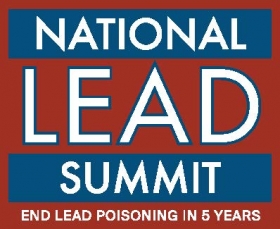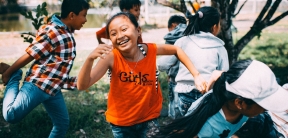This post was authored by Ruth Hennig, Executive Director of the John Merck Fund.
Question: When is achieving 97 percent of a goal not good enough? Answer: When the unfinished 3 percent represents over half a million lead poisoned children.
Getting lead out of paint and gasoline in the 1970s was a singular American public health success. Those two federal actions reduced American children’s blood lead levels by almost 95 percent, and raised the IQ of all children born in the US since 1980 by 3-5 points. The bans on lead also appear to have played a role in reducing rates of violent crime.
With these achievements in mind, many of us in the environmental community considered the lead poisoning problem solved, and we moved on to other issues. As a funder in health and environment since the 1990s, The John Merck Fund has concentrated on many other chemicals of concern: endocrine disrupters, flame retardants, pesticides, mercury – but never lead.
But Flint and many other cities painfully remind us that the epidemic of lead poisoning in America is far from over. The CDC estimates that 535,000 children under the age of 5 still have elevated blood levels. Untold millions more have harmful lead levels when we take into account that current science tells us there is NO safe level of lead, and that the harm to brain development is irreversible.
In addition to loss of intelligence (lower IQ), lead exposure causes learning disabilities, attention deficits, and impulsive behavior. Exposures in the womb (everyone’s first environment) are especially dangerous.
And who are the children for whom deleaded paint and gasoline have failed to provide a remedy? Invariably, they are members of low-income communities or families of color. They live in the 20 million homes built before 1978 where lead is still in paint, soil and water pipes. They live near airports where planes are powered by fuel that still contains lead. Many play with imported toys that contain lead. For these children, lead poisoning is the additional burden that combines with the other effects of poverty (“toxic stress”) to create lifelong impediments to healthy, productive lives.
Credit: Earl Dotter
Thus, lead poisoning is a tragic example of disproportionate impacts and health disparities as mediated by race and income. It dooms these already threatened children to a lifetime of reduced achievement and increased risk.
The task may seem daunting, but we already have the knowledge we need to end lead poisoning for all American children. We know the scope of the problem; and we know how to fix it. What we now need is the national will to harness the resources and execute the playbook that will finish what began with such success 40 years ago.
Healthy Babies Bright Futures, an alliance of NGOs, scientists and donors that JMF was instrumental in creating, is partnering with other leading groups to organize the National Lead Summit as the catalytic event that launches an ambitious and long overdue National Call to End Childhood Lead Poisoning in 5 Years. The summit is happening December 4 and 5 in Washington.
Just as America has set other big goals, we must return to the “forgotten but not gone” tragedy of lead poisoning and declare as a nation that we will end childhood lead poisoning in 5 years. 535,000 children are waiting for us to stand up together and say, Yes we can!
Ruth Hennig
Ruth Hennig has worked in the environmental field for over 25 years, first at the Conservation Law Foundation in Boston and now as the Executive Director of The John Merck Fund, where she oversees program-related special initiatives. Ruth has served in management roles at Environmental Grantmakers Association, the Consultative Group on Biological Diversity, and the Health and Environmental Funders Network. She is currently on several NGO boards: Issue One, which is building support for reducing the influence of money in politics; and the League of Conservation Voters Education Fund. In addition, Ruth was a Beldon Fund trustee, and is a former board chair at SmartPower and the New England Grassroots Environment Fund, two organizations that she helped found.




